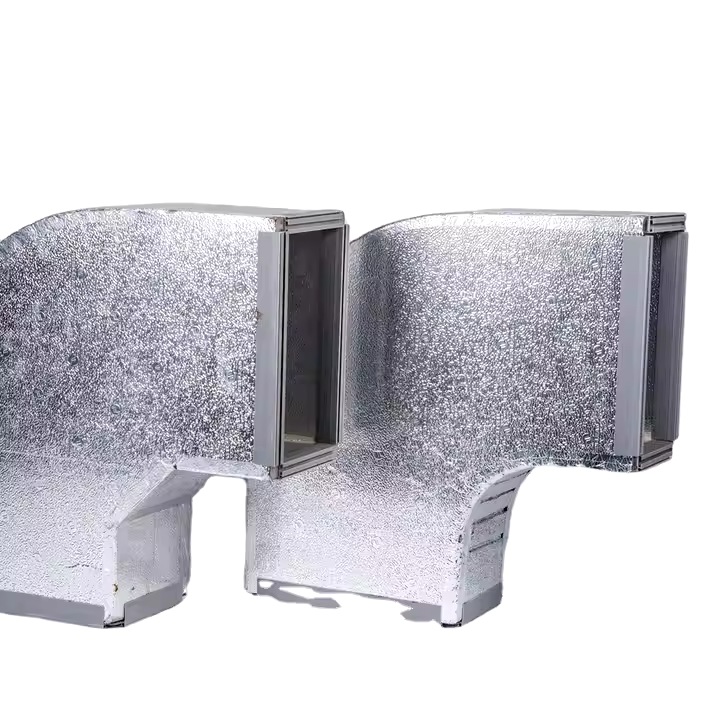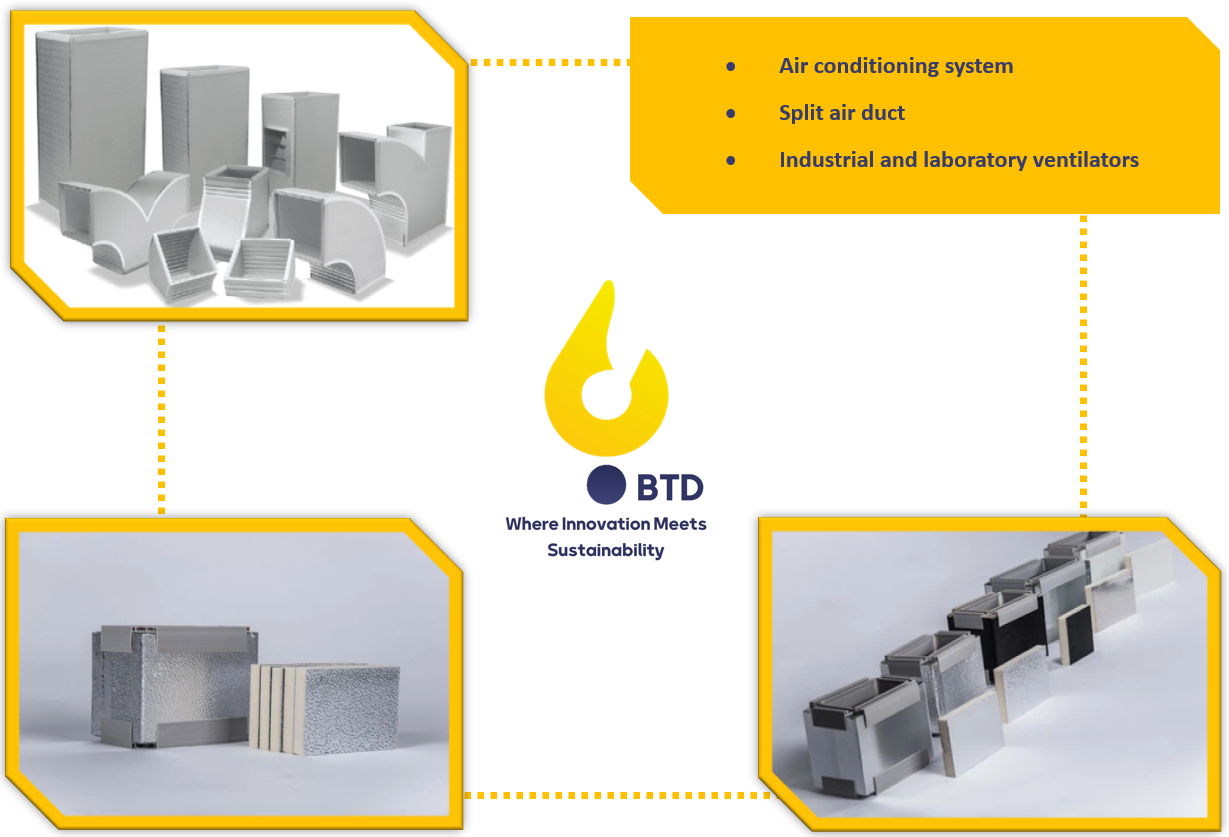Air duct foam
Polyurethane foam air ducts are used to prevent energy loss in ventilation systems. Compared to metal materials, air ducts made from polyurethane foam are lighter, have higher thermal insulation efficiency, and are easier to install. The formulated polyols by Bespar Tose’e Davam Chimi Company, used in polyurethane foam air ducts, are produced and supplied in various flame-retardant systems such as B1, B2, and B3 (normal) by this company. This company has the capability to produce different grades of polyols based on density and various flame-retardant features as defined by the customer's needs. We will now examine the technical parameters that influence the properties of the polyol used in polyurethane foam air ducts.

Variety of Grades
| Specification | Unit | BATOPOL | |||
|---|---|---|---|---|---|
| HF1100 | |||||
| Polyol Properties | Type | Flame retardant B1-rated | |||
| Brookfield Viscosity | cps | 800±100 | |||
| Cream time | sec | 30±2 | |||
| Gel time | sec | 120±5 | |||
| Tack Free Time | sec | 180±10 | |||
| Free Rise Density | kg/m³ | 35±2 | |||
| Foam Properties | Core Density in Foam | kg/m³ | 36-40 | ||
| Closed Cell Content | % | >90 | |||
| Compressive Strength | kPa | >160 | |||
| Thermal conductivity (k-factor) | W/mK | 0.023 | |||
| Fire Properties | B3 | ||||
Applications

